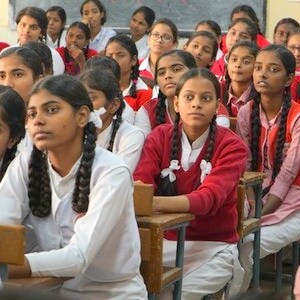Gender inequality remains a burning issue in India and around the world.
[the_ad id=”13371″]
While many strides have been made in several areas to close the gender gap, one of the most prevalent concerns arises from access to food and nutrition among girls in comparison to their male counterparts.
Gender-based nutrition inequality can have far-reaching effects on the health and wellbeing of girls, and its impact pervades their entire lives. In many developing nations, social and cultural norms result in women and girls having restricted access to food and nutrition. It is still prevalent in many parts of India for women and girls to eat last, eat least and eat food of lower nutritional value.
Nutrition inequality among girls begins at birth. Studies have shown that girls tend to be breastfed for shorter periods than boys. With the widespread preference for sons, girls are often seen as an unnecessary investment which is better spent on boys. Oftentimes, boys are given better quality and quantity of food and are exposed to a wider variety of food groups compared to girls. Poor nutrition sets the foundation of poor health not only for the girl child, but also for future children that she may bear.
The impact of nutrition on girls’ health and education
According to the United Nations, the under-5 deaths stand at 38.4 for boys and 40.4 for girls in India. Around 40 per cent of girls in India are anemic compared to 18 per cent of boys. Girls have different nutritional needs and malnutrition particularly affects adolescent girls because it is a period of rapid growth. Adolescent girls need foods high in protein, iron, and other micronutrients to bolster the adolescent growth spurt and supply the body’s increased demand for iron during menstruation.
Nutrition inequality leads to anemia and iron deficiency in adolescent girls and severely impacts many areas of girls’ lives including sensory, motor, cognitive, emotional and social development.
Furthermore, undernourished girls tend to underperform in school, and the lack of sufficient and healthy food leads to higher absenteeism and school drop-out rates among girls. In many lower income families, education and food resources are prioritized towards the men and boys in families. Thus, further placing girls at a scholastic disadvantage which will subsequently have an effect on their ability to secure higher paying jobs. Understanding the nutrition gap between girls and boys is a crucial step to empowering girls and enabling gender equity and equality of opportunity.
Nutrition and its impact on infant and maternal health:
Poor nutrition among girls sets the foundation for poor health in adulthood. It is well understood that undernourished mothers give birth to undernourished babies. An estimated quarter of women of reproductive age in India are undernourished. According to Lancet and EClinical Medicine, 68% of the under-5 deaths in India can be attributed to child and maternal malnutrition.
Maternal malnutrition can also lead to obstructed labor, premature births, low-birth-weight babies, postpartum hemorrhaging and maternal deaths during labor. Additionally, premature births and low birth weight account for around 83% of the neonatal deaths in the country.
The cycle of poor nutrition perpetuates and results in poor health being passed on from mother to children.
How nutrition affects menopausal women
Studies have shown that fetal malnutrition is linked to various conditions in adulthood such as diabetes and coronary artery disease. It has also been linked to early menopause and premature ovarian failure. Lack of access to food rich in protein, calcium, iron, Vitamin D and other nutrients can also result in conditions such osteoporosis and sarcopenia (muscle degeneration due to age) in older women. Therefore, it is very important for girls to eat an abundance of nutrient rich foods to safeguard their health and wellbeing even later in life.
It is crucial to have a holistic and multi-faceted approach to the issue of gender equality. In our efforts to close the gender gap, it important to understand the various ways in which simple things, such as the equal access to nutritious food not only impacts the health, wellbeing and lives of girls and women, but also their families and the wellbeing of society as a whole.
Source:

Sudha Joshi Betarbet
Health Editor
